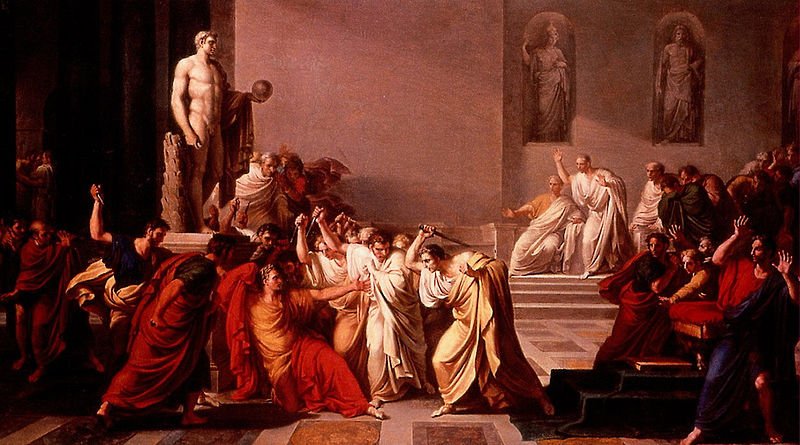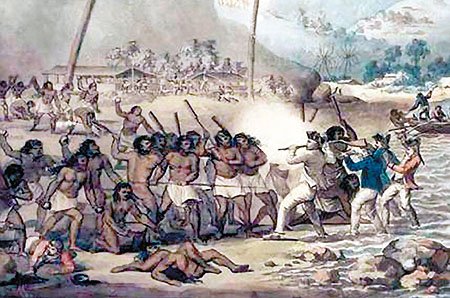1. Great rulers are turned into myth and this happened to Julius Ceasar. I once noticed it when reading Alf Henrikson's Antikens historier. The following notes are my reflections at that time: I had decided to look up in what month Caesar was stabbed by Brutus, it just couldn't be July, I thought. My intuition said it should be at the other end of the single-cycle year, at the close of the year. Caesar represents human order and Brutus the 'brutal' chaotic forces which are so strong in spring. I was too lazy to search for Gibbons. Instead a quick look in Wikipedia was immediately rewarding. He was killed in the 'ides of March' (= March 15). And of course, Brutus was not alone - he had a bunch of companion brutes:
This is no longer my intuition working, it is my conscious mind following the map created from experience gained by walking in the mythic landscape. It couldn't be any other time than at the end of one rule, and being the rule of Rome, the great civilization, it couldn't be the time when the spring serpent is beheaded. I do not care if Wikipedia tells the 'true' (historical) story or if it has been manipulated over time. I do not care about the tunnel-eyed singleminded cause-and-effect superficial beliefs - I am interested in the deeper fundamental structure that is man. The structure which changes histories into myths. It is anyhow quite astonishing how in the tumult (turning over, toppling) of Caesar the stabbing knife at the beginning of a new year has its parallel in how Captain Cook was murdered in the tumult on Hawaii at the same time (in the mythic frame):
(Drawing by John Cleveley in 1784.) |

